-
 Bitcoin
Bitcoin $106,722.7227
-0.34% -
 Ethereum
Ethereum $2,418.3544
0.14% -
 Tether USDt
Tether USDt $1.0003
0.02% -
 XRP
XRP $2.1184
-2.95% -
 BNB
BNB $643.5763
-0.05% -
 Solana
Solana $142.5578
-1.03% -
 USDC
USDC $0.9997
-0.02% -
 TRON
TRON $0.2712
0.04% -
 Dogecoin
Dogecoin $0.1597
-2.44% -
 Cardano
Cardano $0.5543
-2.66% -
 Hyperliquid
Hyperliquid $37.0573
-0.79% -
 Bitcoin Cash
Bitcoin Cash $491.8819
2.16% -
 Sui
Sui $2.6348
-4.78% -
 Chainlink
Chainlink $13.0863
0.02% -
 UNUS SED LEO
UNUS SED LEO $9.0041
0.08% -
 Stellar
Stellar $0.2352
-2.73% -
 Avalanche
Avalanche $17.2314
-2.32% -
 Toncoin
Toncoin $2.8089
-1.45% -
 Shiba Inu
Shiba Inu $0.0...01124
-2.47% -
 Litecoin
Litecoin $84.5273
0.15% -
 Hedera
Hedera $0.1446
-4.17% -
 Monero
Monero $313.6797
0.09% -
 Dai
Dai $0.9998
-0.01% -
 Ethena USDe
Ethena USDe $0.9999
-0.03% -
 Polkadot
Polkadot $3.3013
-1.98% -
 Bitget Token
Bitget Token $4.4786
2.50% -
 Uniswap
Uniswap $6.8362
-1.43% -
 Pi
Pi $0.5605
-12.40% -
 Pepe
Pepe $0.0...09242
-4.79% -
 Aave
Aave $252.8934
-2.23%
Should I add positions when the gap is not filled for three days?
A gap in crypto trading occurs when an asset opens significantly higher or lower than its previous close, often due to news or market shifts, and may remain unfilled if momentum or institutional activity sustains the new price level.
Jun 26, 2025 at 07:49 pm
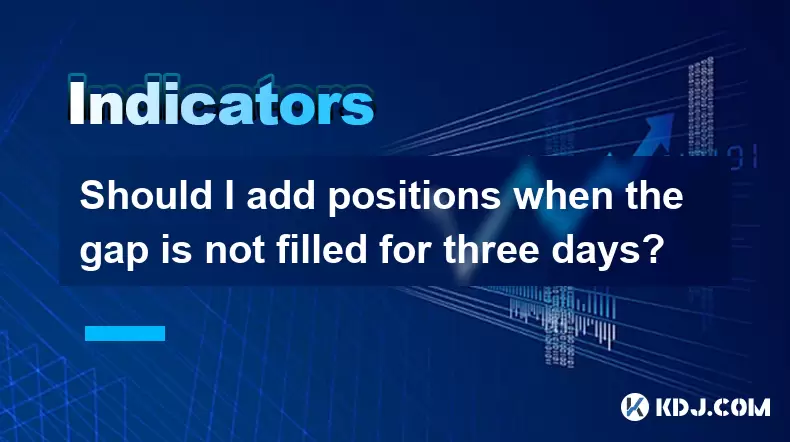
Understanding the Concept of Gaps in Cryptocurrency Trading
In cryptocurrency trading, a gap occurs when the price of an asset opens significantly higher or lower than its previous closing price, with no trading activity taking place in between. This phenomenon is common due to the 24/7 nature of crypto markets and external events such as news releases, regulatory updates, or macroeconomic shifts that can influence prices overnight.
When a gap forms, traders often look for signals on whether it will be filled — meaning the price returns to the level before the gap — or if it will remain open. A key question among traders is: should I add positions when the gap is not filled for three days?
Why Gaps Remain Unfilled for Multiple Days
Gaps may remain unfilled for various reasons. One major factor is strong momentum following the gap. If a cryptocurrency surges due to positive news, traders may continue buying during the next few sessions, reinforcing the new price level. In such cases, the market may treat the gap area as obsolete support or resistance.
Another reason involves institutional or algorithmic trading patterns. Large players might intentionally avoid revisiting old price levels, especially if they've established significant positions after the gap. Additionally, market sentiment and volume play a role — low interest in returning to the prior level can cause the gap to persist.
Evaluating the Risk-Reward Ratio Before Adding Positions
Before adding to a position, traders must assess the risk-reward dynamics. If the price hasn’t returned to the gap zone within three days, it suggests that the market has moved on. Entering at this point could mean chasing the trend without confirmation of continuation.
- Identify key support and resistance levels near the current price
- Check volume patterns since the gap occurred
- Assess broader market conditions and news flow
- Use technical indicators like RSI or MACD to confirm strength
Adding positions blindly based solely on the time elapsed since the gap appeared can expose traders to unnecessary risks, particularly if the momentum starts to wane.
Backtesting Strategies Around Gap Retests
Historical data shows that not all gaps get filled, and those that do often take varying amounts of time. Traders should conduct backtests on their preferred assets to determine how frequently gaps are retested within three days or longer.
To perform a basic backtest:
- Select a cryptocurrency pair with sufficient historical data
- Identify past instances where a gap remained unfilled for at least three days
- Analyze what happened afterward — did the price consolidate, reverse, or continue?
- Measure average gains or losses from entering positions at different intervals
This approach helps build a statistical edge rather than relying on intuition alone.
Psychological Factors Influencing Gap Filling Behavior
Traders often feel compelled to act when they see a gap that hasn't been filled. This stems from cognitive biases such as the anchoring effect, where individuals fixate on the original price level. However, in fast-moving crypto markets, old prices may no longer reflect current fundamentals or sentiment.
Emotional decision-making can lead to poor trade entries. It’s crucial to detach from past price behavior unless there's clear evidence that the market is likely to revisit it. Discipline and adherence to a predefined trading plan are essential in these scenarios.
Alternative Entry Points After an Unfilled Gap
Instead of focusing exclusively on the gap itself, traders should consider alternative entry strategies:
- Wait for a pullback or consolidation phase after the initial surge
- Look for breakouts above recent highs as signs of renewed strength
- Monitor order flow and liquidity concentrations
- Utilize moving averages or Fibonacci retracements for dynamic support/resistance
These methods provide more objective criteria for entering trades and reduce reliance on arbitrary timelines like the "three-day rule."
Frequently Asked Questions
What causes a gap to never get filled in crypto markets?
Persistent gaps often occur when strong fundamental or sentiment-driven moves take hold. Institutional accumulation, macro trends, or technological upgrades can shift investor expectations permanently, making the old price irrelevant.
Is it better to wait for a gap to fill before entering a trade?
Not necessarily. Waiting for a fill can result in missed opportunities, especially in trending markets. Instead, focus on confirming the current direction through volume, order book depth, and technical structure.
How does volatility affect the likelihood of a gap being filled?
High volatility increases the chances of erratic price action, which may either accelerate away from the gap or bring it back quickly. Low volatility environments tend to see slower retests or extended consolidation phases.
Can chart patterns help predict whether a gap will be filled?
Yes. Certain formations like flags, pennants, or head-and-shoulders patterns around gaps can offer clues about future price behavior. Combining pattern analysis with volume and momentum studies enhances accuracy.
Disclaimer:info@kdj.com
The information provided is not trading advice. kdj.com does not assume any responsibility for any investments made based on the information provided in this article. Cryptocurrencies are highly volatile and it is highly recommended that you invest with caution after thorough research!
If you believe that the content used on this website infringes your copyright, please contact us immediately (info@kdj.com) and we will delete it promptly.
- Ethereum Whale Moves, Pi Network's Progress, and the Altcoin Surge: What's the Buzz?
- 2025-06-26 22:50:11
- Real World Assets (RWA): Riding the Blockchain Revolution Wave
- 2025-06-26 23:30:12
- Kaspa's Crypto Surge: Riding Market Strength to New Heights
- 2025-06-26 23:10:12
- ONDO Price Primed for Takeoff: Support Bounce Signals Bullish Surge
- 2025-06-26 22:27:13
- Sui Price Prediction: Will the SUI Drop Lead to a Rebound?
- 2025-06-26 23:50:12
- Pi Network: Decoding the Price Growth and Real Demand
- 2025-06-26 23:10:12
Related knowledge
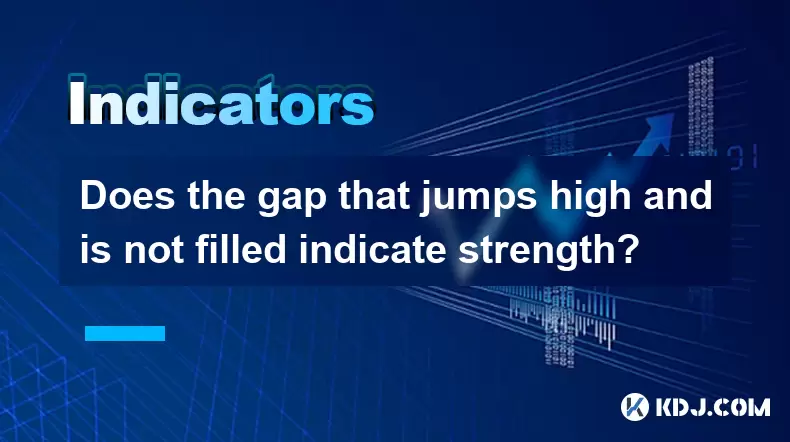
Does the gap that jumps high and is not filled indicate strength?
Jun 26,2025 at 11:36pm
Understanding the Concept of Gaps in Cryptocurrency ChartsIn the world of cryptocurrency trading, gaps refer to areas on a price chart where the price of an asset jumps significantly up or down, leaving no trading activity between two specific points. These gaps typically occur due to after-hours news, market sentiment shifts, or sudden influxes of buy/...
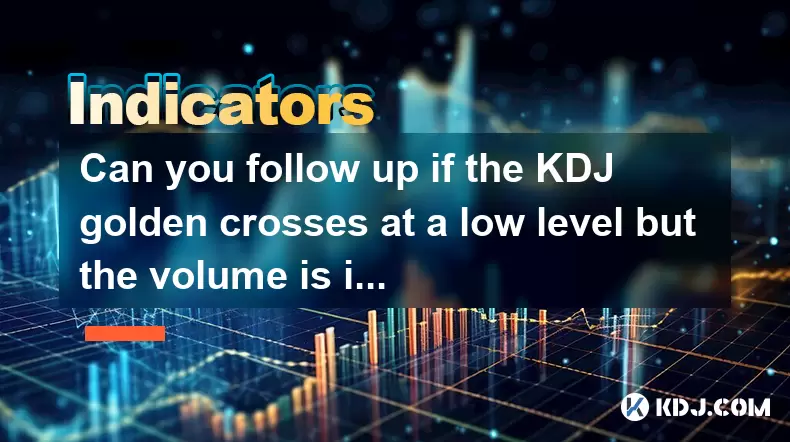
Can you follow up if the KDJ golden crosses at a low level but the volume is insufficient?
Jun 27,2025 at 12:01am
Understanding the KDJ Indicator in Cryptocurrency TradingThe KDJ indicator, also known as the stochastic oscillator, is a popular technical analysis tool used by cryptocurrency traders to identify potential buy and sell signals. It consists of three lines: the %K line, the %D line (which is a moving average of %K), and the %J line (a projection of the t...
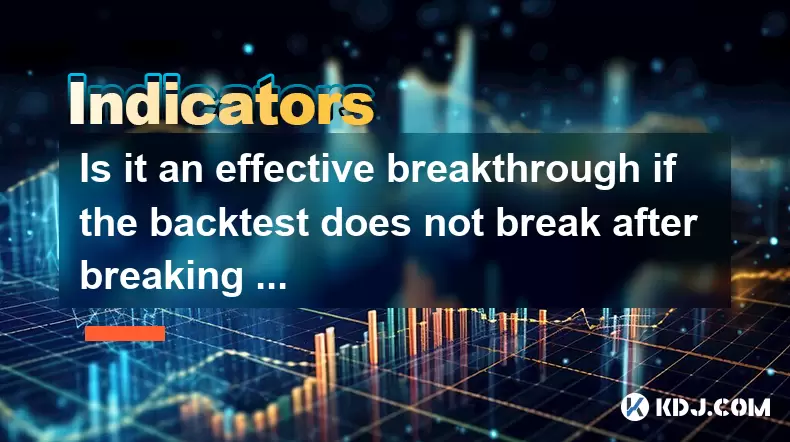
Is it an effective breakthrough if the backtest does not break after breaking through the neckline?
Jun 26,2025 at 10:08pm
Understanding the Role of Blockchain in Secure TransactionsBlockchain technology is at the heart of secure cryptocurrency transactions. Each block contains a list of transactions, and once recorded, altering past blocks becomes nearly impossible without network consensus. This immutability ensures that once a transaction is confirmed, it cannot be rever...
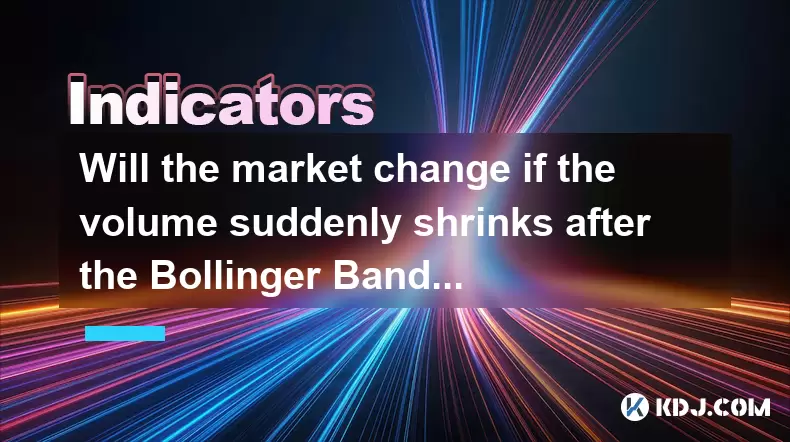
Will the market change if the volume suddenly shrinks after the Bollinger Bands open?
Jun 26,2025 at 09:56pm
Understanding the Bollinger Bands MechanismBollinger Bands are a widely used technical analysis tool that consists of a moving average and two standard deviation lines plotted above and below it. These bands dynamically adjust to price volatility, expanding during periods of high market activity and contracting when volatility decreases. Traders use thi...
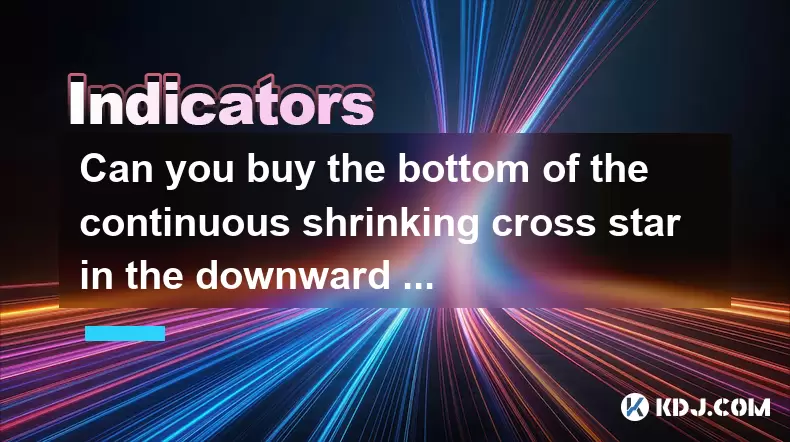
Can you buy the bottom of the continuous shrinking cross star in the downward trend?
Jun 26,2025 at 10:28pm
Understanding the Continuous Shrinking Cross Star PatternThe continuous shrinking cross star is a candlestick pattern that typically appears during a downtrend. It consists of multiple small-bodied candles with upper and lower shadows, indicating market indecision. Each subsequent candle in this pattern has a smaller body than the previous one, showing ...

Is there a main force bottom-fishing with a long lower shadow at a low position?
Jun 26,2025 at 10:56pm
Understanding the Candlestick Pattern: Long Lower Shadow at a Low PositionA long lower shadow candlestick pattern is often seen as a potential reversal signal in technical analysis. When this pattern appears at a low position, it suggests that sellers pushed prices down during the session, but buyers eventually stepped in and pulled the price back up ne...

Does the gap that jumps high and is not filled indicate strength?
Jun 26,2025 at 11:36pm
Understanding the Concept of Gaps in Cryptocurrency ChartsIn the world of cryptocurrency trading, gaps refer to areas on a price chart where the price of an asset jumps significantly up or down, leaving no trading activity between two specific points. These gaps typically occur due to after-hours news, market sentiment shifts, or sudden influxes of buy/...

Can you follow up if the KDJ golden crosses at a low level but the volume is insufficient?
Jun 27,2025 at 12:01am
Understanding the KDJ Indicator in Cryptocurrency TradingThe KDJ indicator, also known as the stochastic oscillator, is a popular technical analysis tool used by cryptocurrency traders to identify potential buy and sell signals. It consists of three lines: the %K line, the %D line (which is a moving average of %K), and the %J line (a projection of the t...

Is it an effective breakthrough if the backtest does not break after breaking through the neckline?
Jun 26,2025 at 10:08pm
Understanding the Role of Blockchain in Secure TransactionsBlockchain technology is at the heart of secure cryptocurrency transactions. Each block contains a list of transactions, and once recorded, altering past blocks becomes nearly impossible without network consensus. This immutability ensures that once a transaction is confirmed, it cannot be rever...

Will the market change if the volume suddenly shrinks after the Bollinger Bands open?
Jun 26,2025 at 09:56pm
Understanding the Bollinger Bands MechanismBollinger Bands are a widely used technical analysis tool that consists of a moving average and two standard deviation lines plotted above and below it. These bands dynamically adjust to price volatility, expanding during periods of high market activity and contracting when volatility decreases. Traders use thi...

Can you buy the bottom of the continuous shrinking cross star in the downward trend?
Jun 26,2025 at 10:28pm
Understanding the Continuous Shrinking Cross Star PatternThe continuous shrinking cross star is a candlestick pattern that typically appears during a downtrend. It consists of multiple small-bodied candles with upper and lower shadows, indicating market indecision. Each subsequent candle in this pattern has a smaller body than the previous one, showing ...

Is there a main force bottom-fishing with a long lower shadow at a low position?
Jun 26,2025 at 10:56pm
Understanding the Candlestick Pattern: Long Lower Shadow at a Low PositionA long lower shadow candlestick pattern is often seen as a potential reversal signal in technical analysis. When this pattern appears at a low position, it suggests that sellers pushed prices down during the session, but buyers eventually stepped in and pulled the price back up ne...
See all articles
























































































